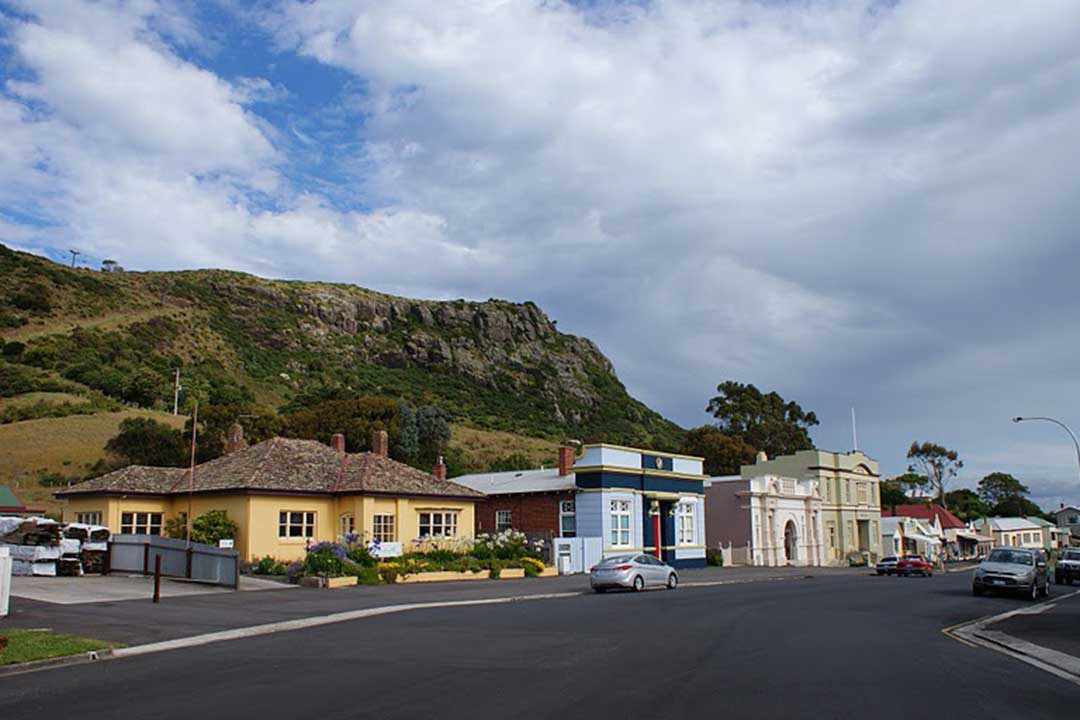
Stanley
Sheltering on the leeward side of Circular Head, the village of Stanley is a picturesque cray and shark fishing settlement that seems to belong in a previous era, but has somehow managed to defy the march of time and progress and make it into the 21st century relatively intact.
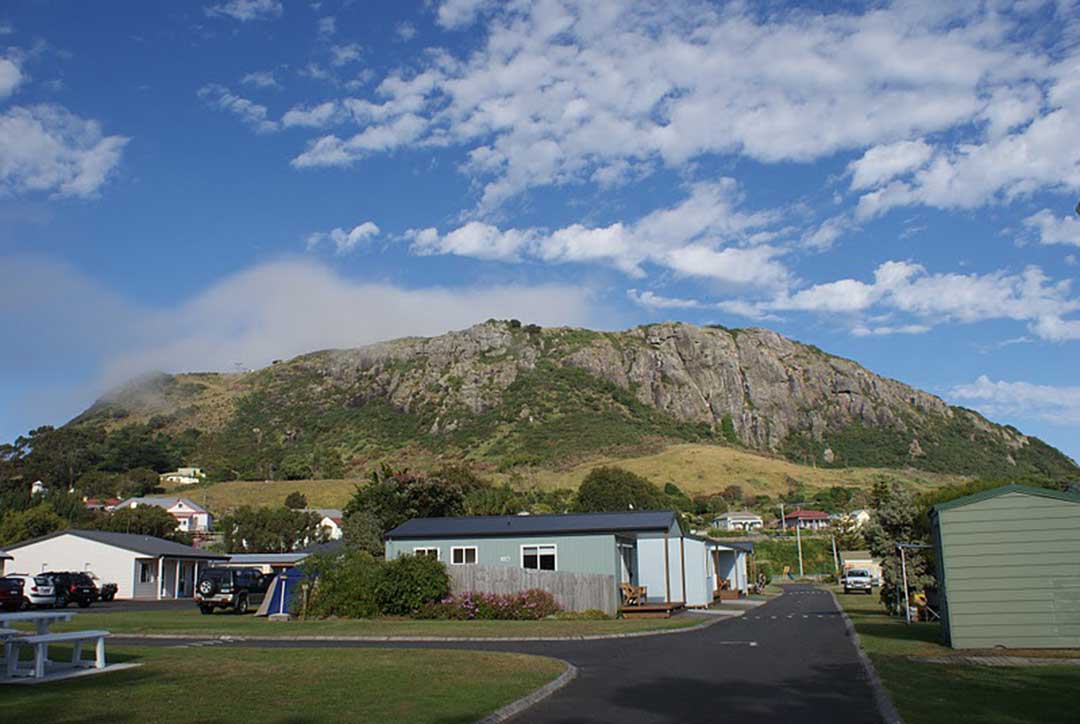
A visit to Stanley is like taking a step back in time. It's an opportunity to stop and escape the frantic pace of modern life, if only for a few hours. The friendly locals go about their business as if tomorrow is a long way away, and the fresh sea air gives you an appetite for the simple, wholesome food on offer by the town's numerous eating establishments - everything from wood-fired pizzas and char-grilled octopus to curried scallop pies.
Visitor Information Centre: 45 Main Rd, Stanley. Ph (03) 6458 1330
Where Is it?: Stanley is 80 km west of Burnie and 127 km west of Devonport via Bass Highway.
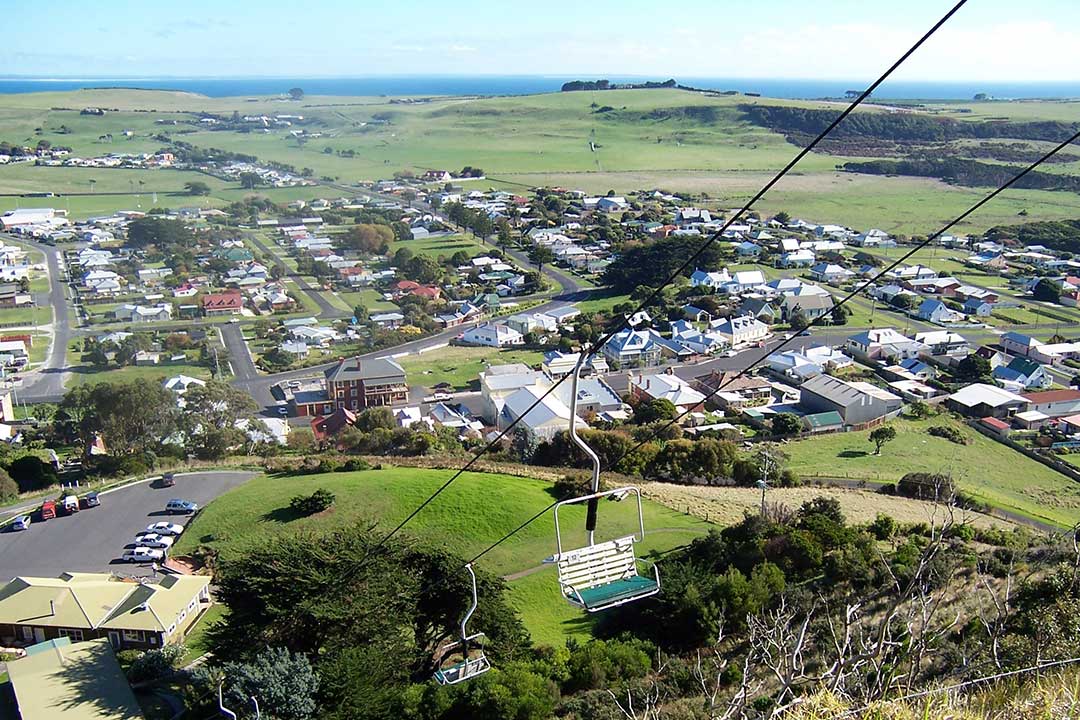
About Stanley
The town of Stanley lies sheltered beneath Circular Head, known as The Nut, a volcanic plug which forms a massive headland projecting from the surrounding low relief coastal topography. Matthew Flinders and George Bass sighted the nut, given it the name 'Circular Head', in 1798 during their historic circumnavigation of Tasmania, then known as Van Diemen's Land.
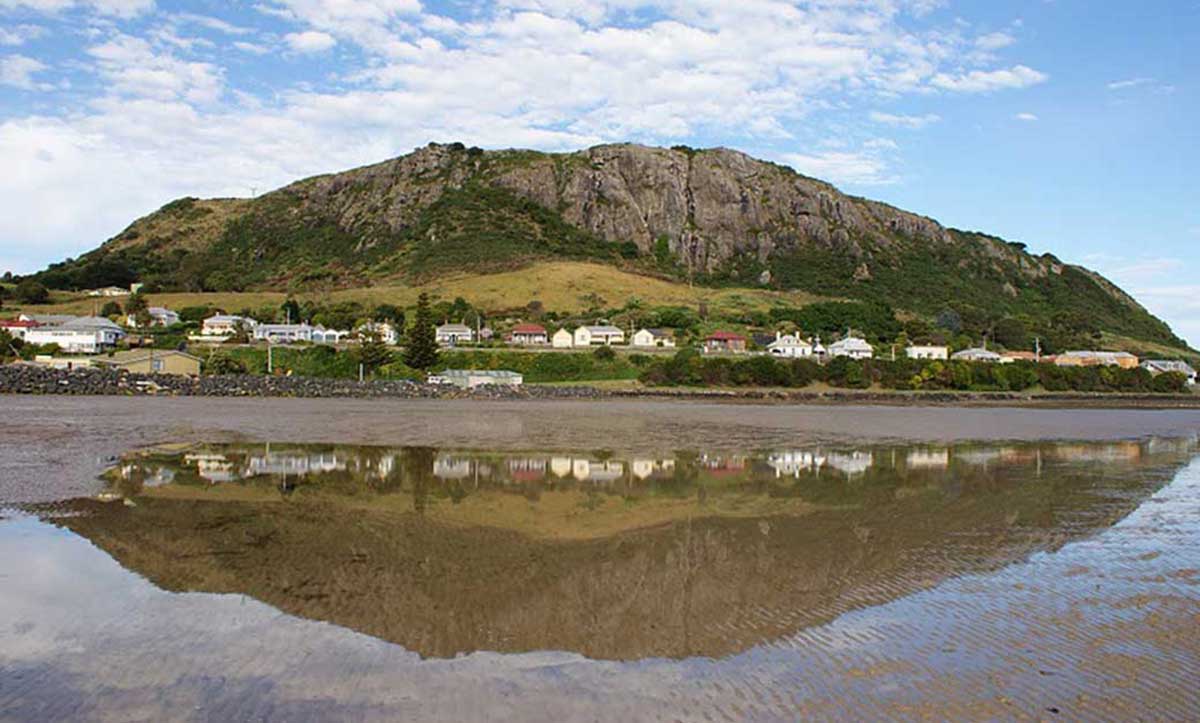
The settlement at Circular Head was the first European settlement in north west Tasmania, though it was not known as Stanley until it was properly surveyed as a town in 1842. Development of the region began when favourable reports of the area in London led to the formation, under Royal Charter in 1825 of the Van Diemen's Land Company, which was granted 350,000 acres in the area to raise fine-wool sheep. In October 1826 the first colonists landed on the site from the the Brig Tranmere, and the area was surveyed by Henry Hellyer.
By the 1840s the company was selling land to private buyers, and convential town development began. In 1842 the Company, in association with the government of the day, organised John Lee Archer to design the township, which he named Stanley after the then Secretary of State for the Colonies in Britain. By the end of the 19th Century a timber industry had been established in the district, and dairying and agriculture were also prospering. In 1906 Stanley became the administrative centre of the municipality of Circular Head, a function which was passed to Smithton in the early 1920s.
Climbing The Nut
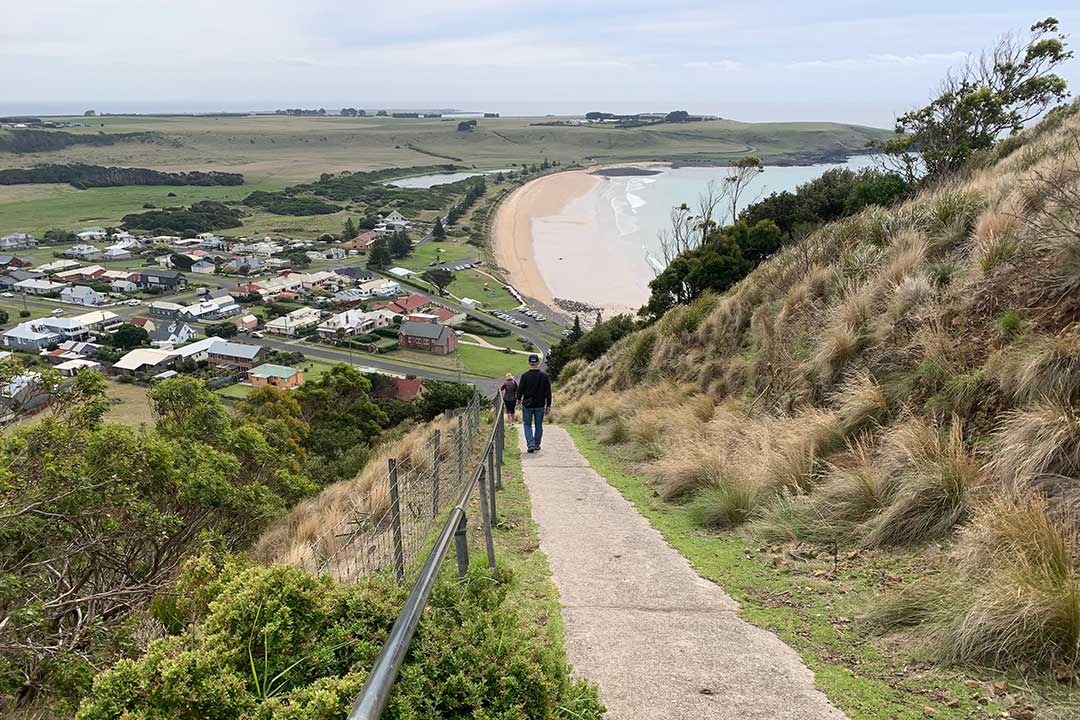
The Nut - the large hill which overshadows the town and dominates Circular Head - is actually the core or volcanic plug of what was once a volcano over 13 million years ago. Almost surrounded by ocean, the Nut rises 152 metres above sea level. It is now a state reserve and has a range of bird life including Short Tailed Shearwater (muttonbird), Nankeen Kestrel, Peregrine Falcons, Silver Gulls, Little Penguins and Orange Bellied Parrots. Visitors to the Nut can either walk via a path or take the Nut Chairlift ride to the summit for a unique view of Stanley and surrounding areas. There is a 30 minute walk around the summit with lookouts and interpretation signs along the way.
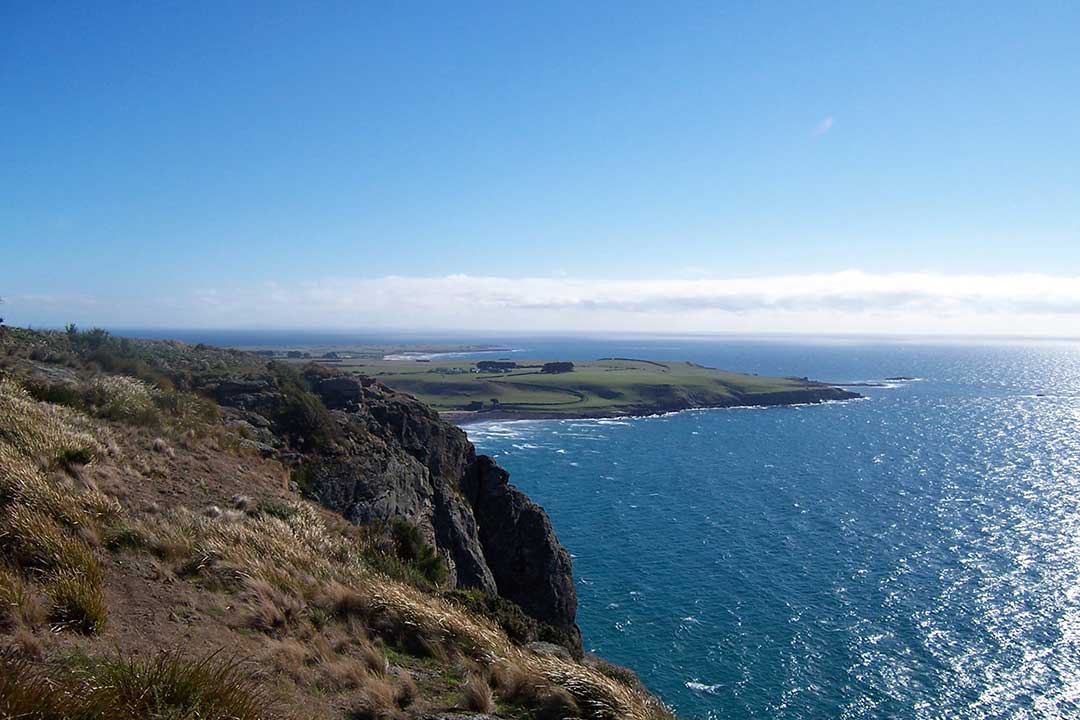
The Nut is an extraodinary geological feature looming above the village of Stanley and can be seen from a great distance. At the top there are excellent views over the town and Bass Strait. There is a diversified circular walk around the top of the Nut with a number of well formed viewing platforms. Most of the walk is through windy grasslands with several lookouts, but one section is through a small forest and has an enchanted feel. The track is nearly 2 kilometres long. There is a sheltered gully which provides welcome relief from the strong wind that often blows across the top
It is worth noting that as late as the mid-1850s The Nut was heavily wooded. The trees were removed and it was used as grazing land until the 1990s.
Around Town
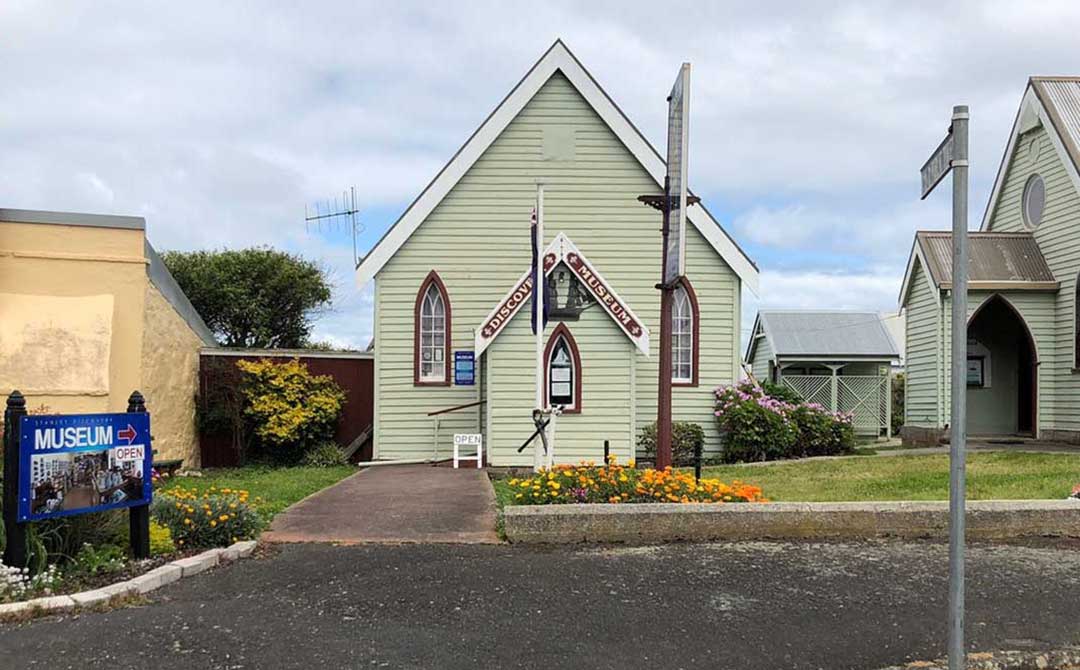
Located in what used to be the Parish Hall for St Paul's Church, Stanley Discovery Museum was established in 1973 as a an exhibition that will take you on a journey into Stanley's past, with relics, antiques, memorabilia, photographs, documents and a genealogy centre from 1804.
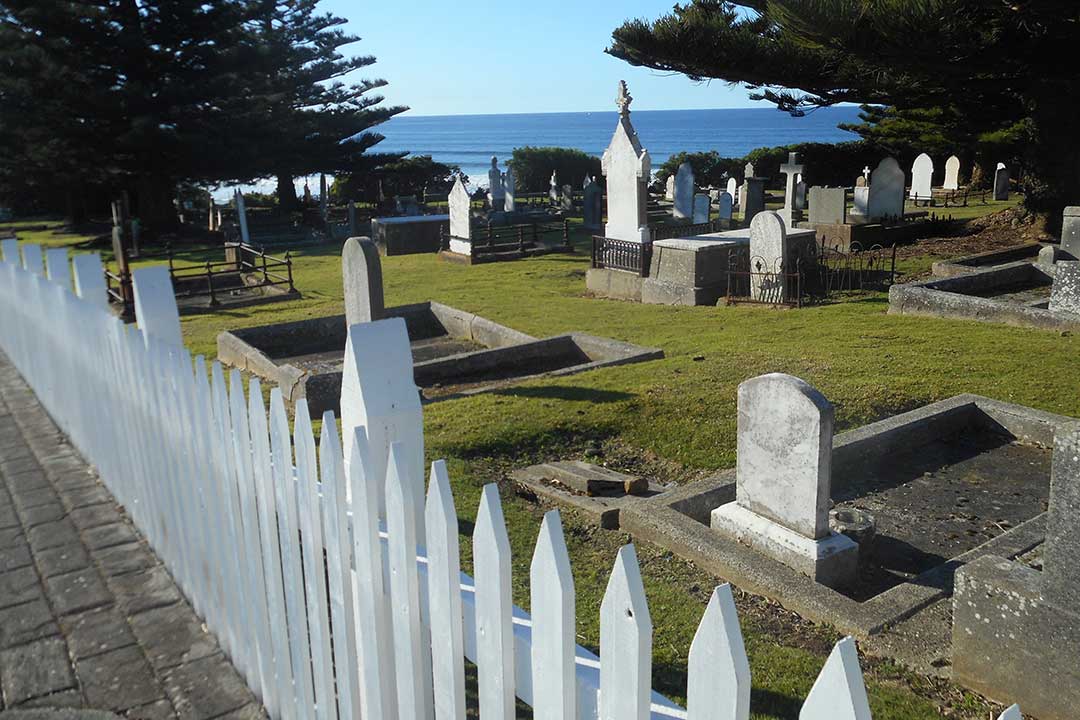
The Old Stanley Cemetery, just out of the town centre on Browns Road near Godfreys Beach, was opened in 1832. Located at the foot of The Nut and overlooking the beach, the cemetery contains many graves of local European settlement pioneers, including those of Colonial Architect J. Lee Archer, who planned the town and designed several buildings, and explorer and surveyor Henry Hellyer, who first explored the north-west region of Tasmania.
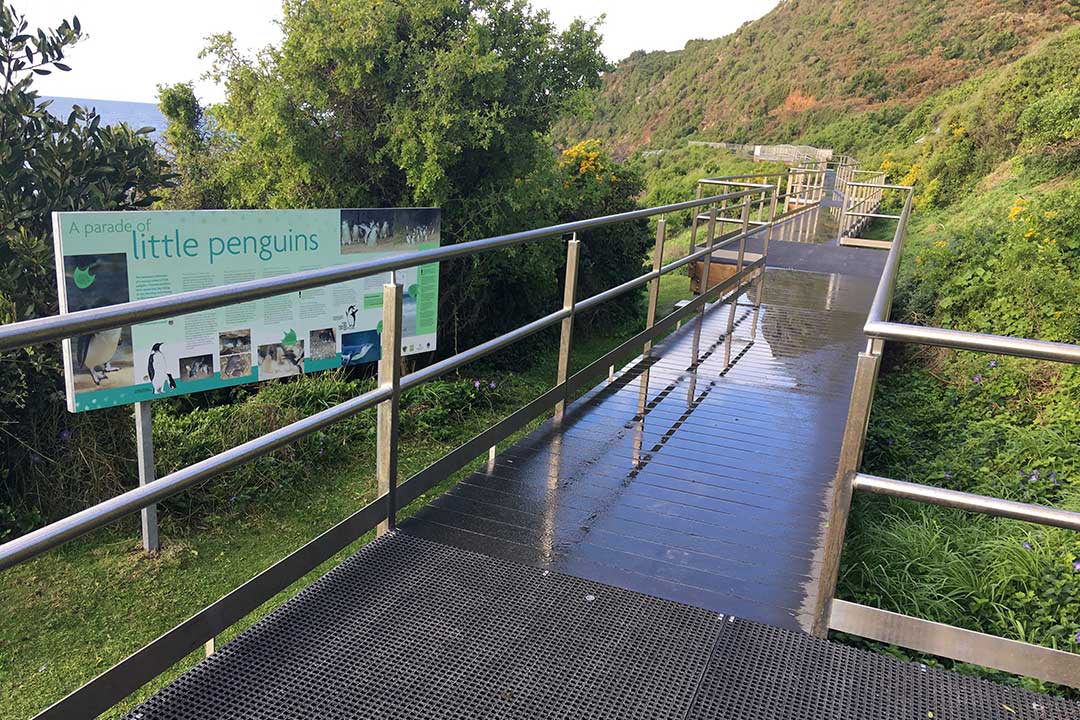
Stanley has a small colony of Fairy Penguins that nest between the cemetery and the eastern end of Godfrey’s Beach. There is an area is fenced off and within the fenced area is a grass area for viewing the penguins as they return from sea after last light. Someone is kind enough to put the time on the gate as to what time the penguins are expected to return each day. It is also possible to see penguins in their burrows during the day awaiting their parents or partners return from a day of fishing. The new viewing platform is suitable for wheelchair access.
Up on the hill behind Stanley on its nouthern site is the Highfield Estate Historic Site, built in 1832-1835 for the chief agent of the Van Diemen's Company, which opened up Tasmania's north-west. The best way to get up there is to drive straight through town on Church Street, past the cemetery and Godfreys Beach along Green Hills Road. On your way to the top is a bay to pull into for a classic photo of the town.
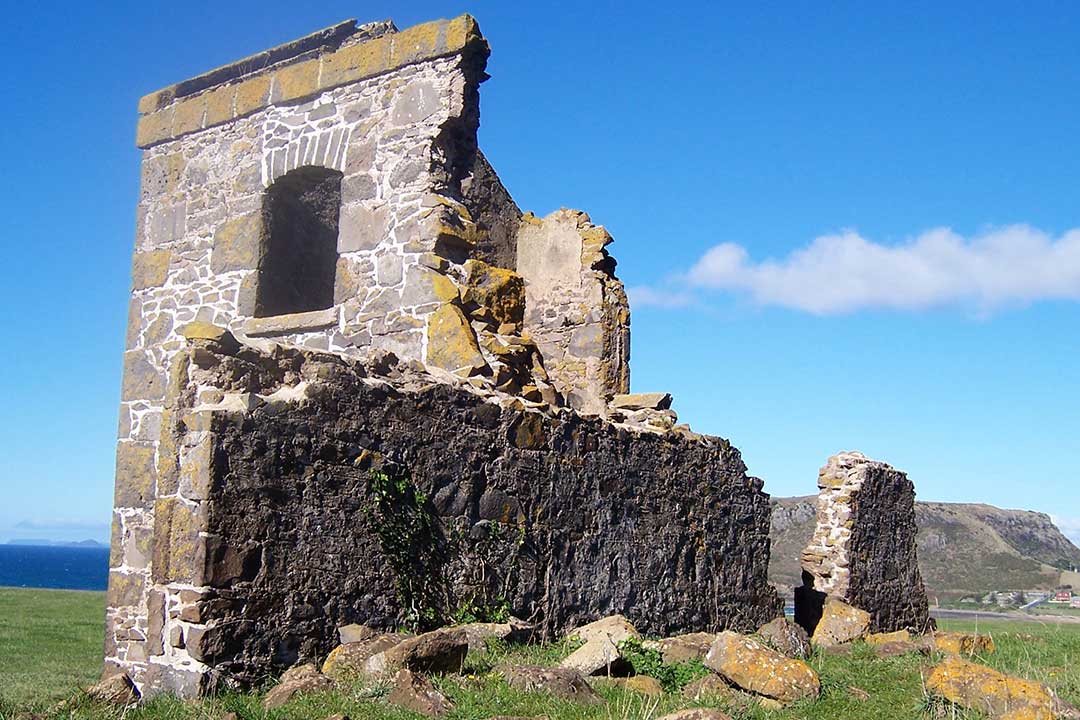
At the top of the hill is the bullyard and the ruins of Barracks for the assigned servants, with walls of fieldstone and large bluestone blocks at the corners. The barracks were built in 1834 and occupied from 1836. There were 41 convicts assigned to the Circular Head establishment, half of whom were housed in these barracks.
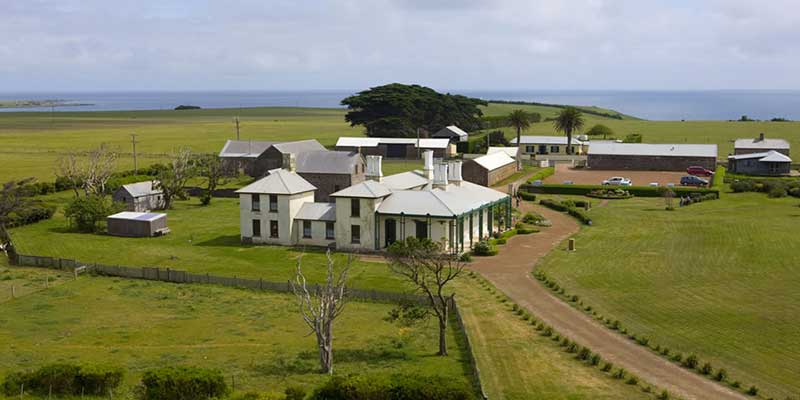
The Highfield Estate was built in 1835 as the residence of the Chief Agent of the Van Diemen's Land Company and was for a time the centre of operations for the Circular Head establishment. Nuilt of sandstock bricks (now stuccoed), this single storey houses comprises of 12 rooms, and an attic. Features include a high verandah, tall French windows, curved bay windows and unusually tall windows. The design is attributed to Henry Hellyer, and an addition was designed by Joh Lee Archer in 1843, although only part of this was carried out.
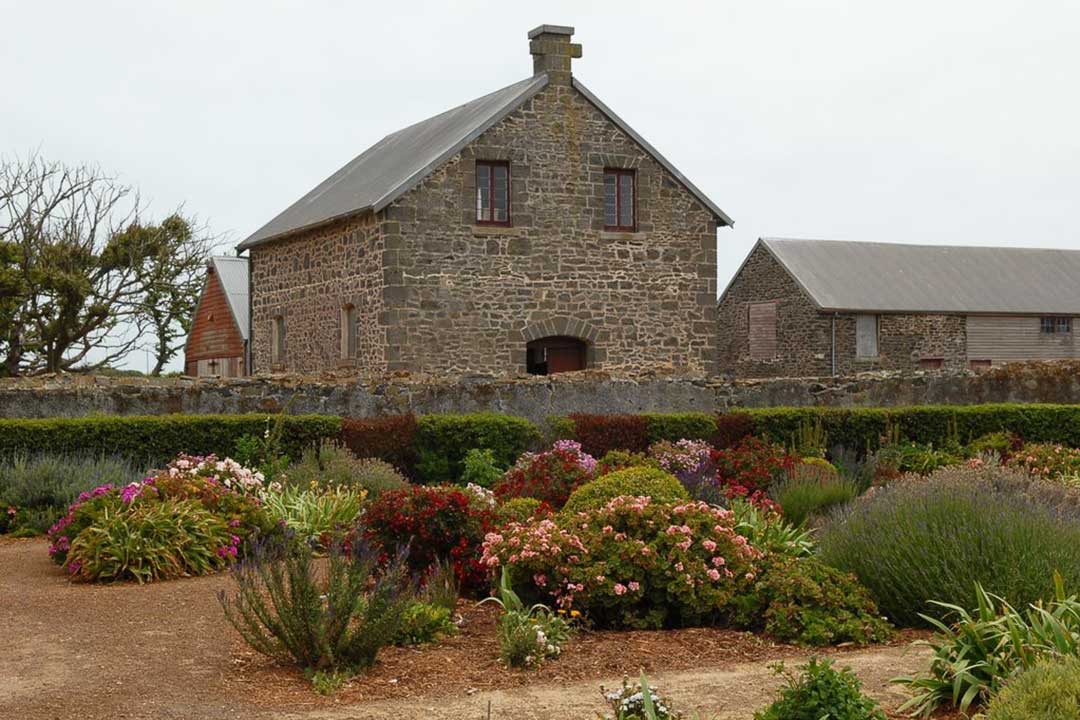
There are a large number of bluestone outbuildings, including a chapel, servants' quarters, barns and stables. Today, the house has been restored after the state government bought it the early 1980's. Visitors may look through the old building and grounds, with information signs acting as the interpretation signs. Guides tours are available.
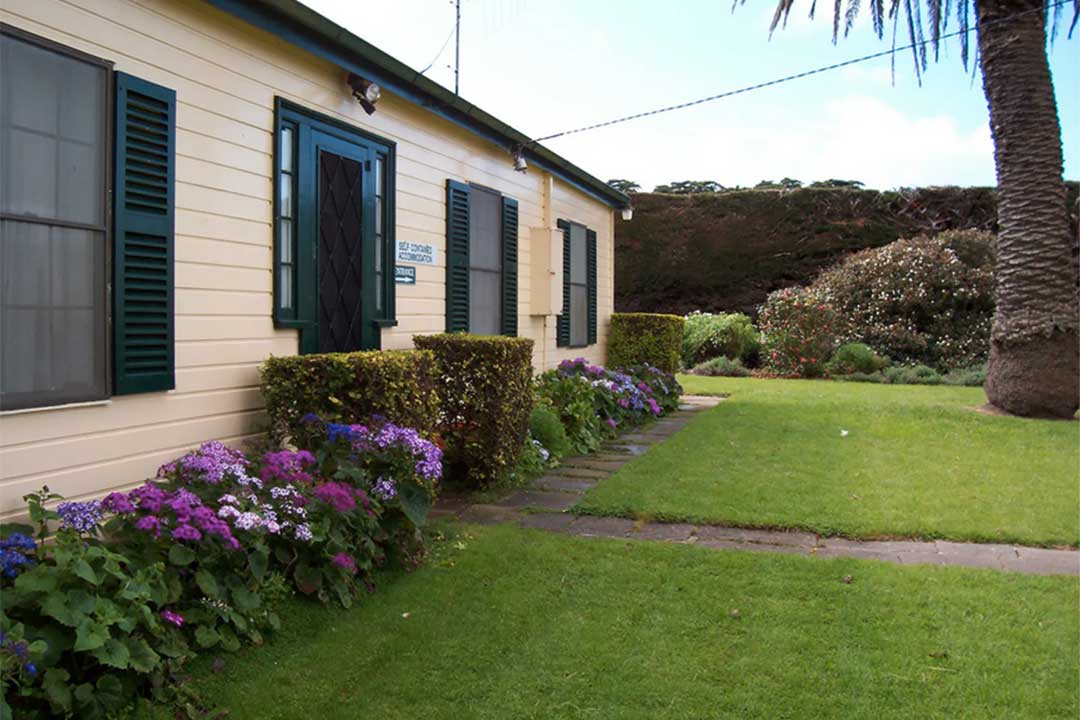
Across the road from Highfield Estate is what is known as Stan Anthony's Homestead. The house was built C. 1926 by the Van Dienem's Land Company and would have been one of the first buildings erected at he Circular Head settlement, and was the first homestead in the area. The single story timber cottage is now re-lined with weatherboards. Edward Curr, first chief agen for the Company, brought his family there in 1827. Henry Hellyer committed suicide in the house on on night of 9th September 1832, leaving a note which is held in the Tasmanian Archives. He never saw the completion of Highfield Estate which he had designed.
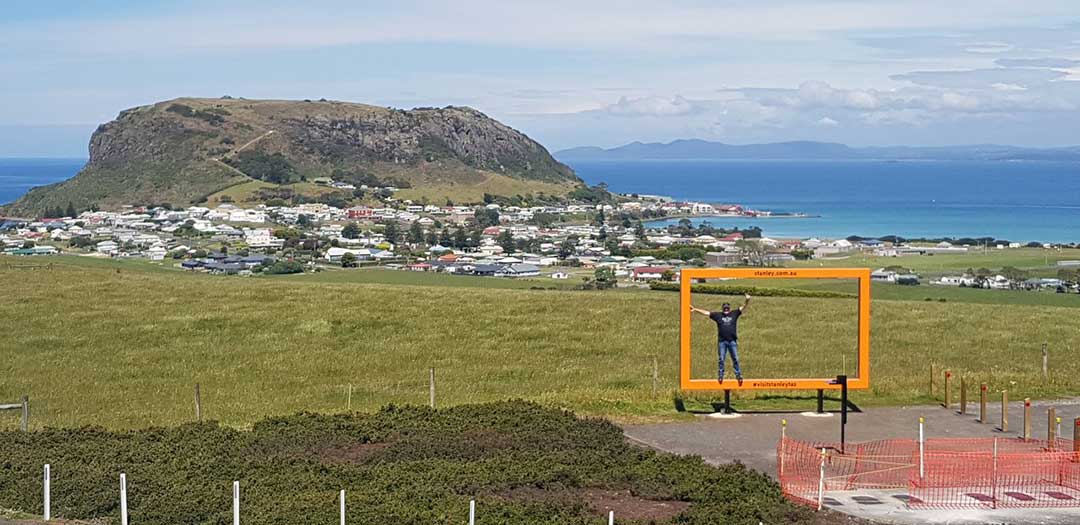
If you go up to the Highfield Historic Site, come back across the top of the ridge in a loop. Before returning to sea level, you pass the H.A. Lane Memorial Lookout. There's a wooden platform/viewing tower here that affords great views not only over Stanley and the Nut, but the whole coastal area to the west and south. A large picture frame has been erected yo frame any photos taking photos of the town. Be aware of strong winds that blow along this coast, and bring some warm clothes even if you come here in summer.
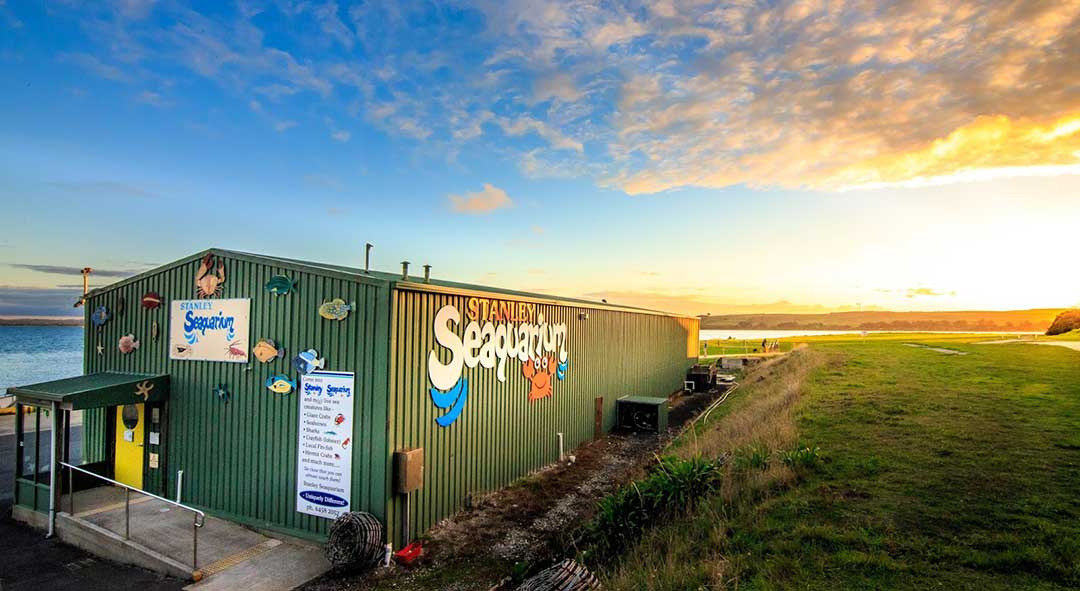
Stanley Seaquarium rovides a fascinating sea-life experience. Located on the waters' edge alongside Stanley's fishing fleet, housed in a shed originally constructed for crayfish processing, Stanley Seaquarium transforms the building into a fascinating discovery of Tasmanian sea-life. Fisherman's Dock, Wharf Road, Stanley TAS 7331. Ph (03) 6458 2052.
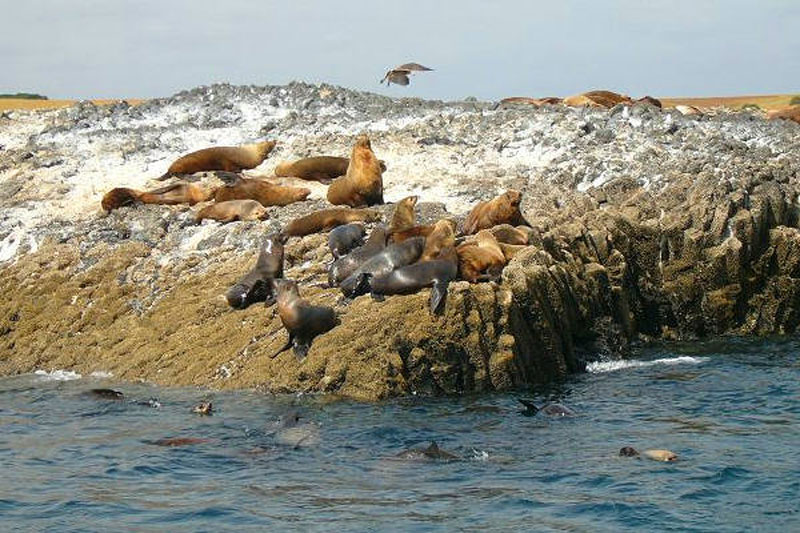
Australian Fur Seals are just beautiful in their natural habitat. Whilst it is impossible to guarantee the appearance of wild animals when humans venture into their habitat, this cruise is a 75 minute trip to Bull Rock and back, where there are rarely less than 300 seals enjoying life, lazing around, swimming around the boat and jumping out of the water.
Leaving from the pontoon at the fisherman's dock, the 75 minute scenic cruise takes in spectacular views of the Stanley Nut, the unique township, the old pioneer cemetery and Godfrey's Beach. Historic farmlands extend to the waterline below, where ocean-eroded caves scatter the shoreline. location: 6 Wharf Rd, Stanley. Phone: (03) 6458 1294.
Stanley's Coastline
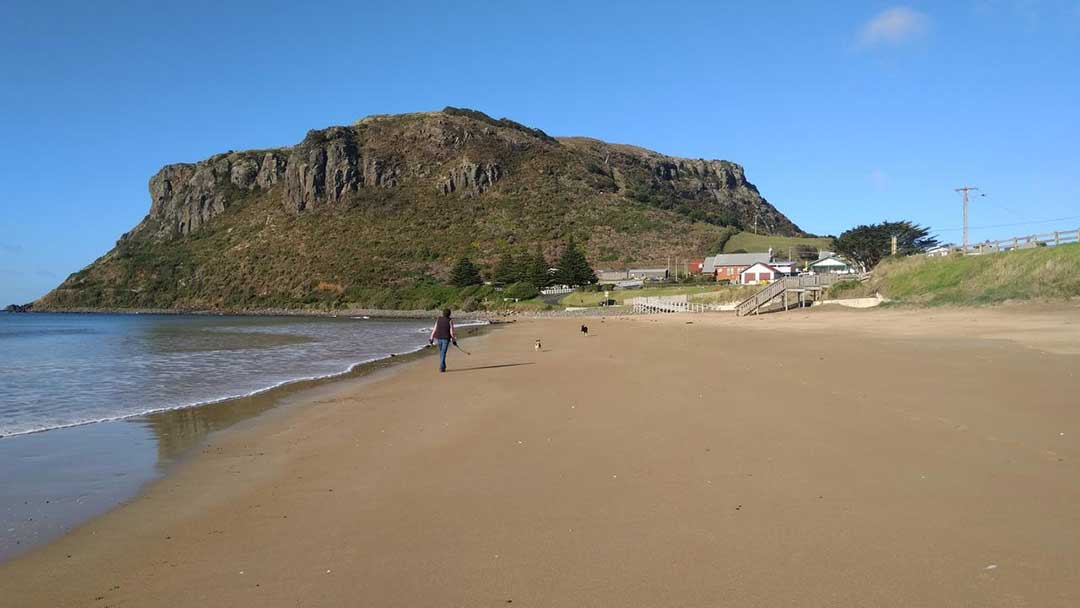
Godfreys Beach
Godfreys Beach is a curving 1.1 km long east-facing beach, which is protected from the strong westerly winds. There are prominent rocky headlands at each end and an extensive rock reef off the northern end of the beach. Features include a large car park, playground, amenities block and sailing club at the southern end. Godfreys is a generally low hazardous beach, however waves breaking at low tide can produce strong rips.

Tatlows Beach
Tatlows Beach is tied to the southern side of The Nut, with Stanley located on the 600 metre wide isthmus in between. This beach faces east into the open Sawyer Bay. Waves break over the tidal shoals resulting in a low energy beach, however strong tidal currents flow though the inlet and out into the bay. Strong westerly winds are great for windsurfing, but can blow people on flotation devices out to sea, so watch children particularly at low tide and on windy days.The beach is backed in the north by the town, caravan park and golf course.
Its name recalls the head of the pioneer wheelwright and blacksmith, Anthony Tatlow (1832-1885), who came to Tasmania from County Cavan, Northern Ireland as an infant. His wife, Hannah Tatlow, nee Burke (1846-1918), was also from Northern Ireland. They had eight children, ran coaching and hotel businesses and were well-loved members of the Stanley community. The beach was the scene of the stranding of 300 whales in 1935.
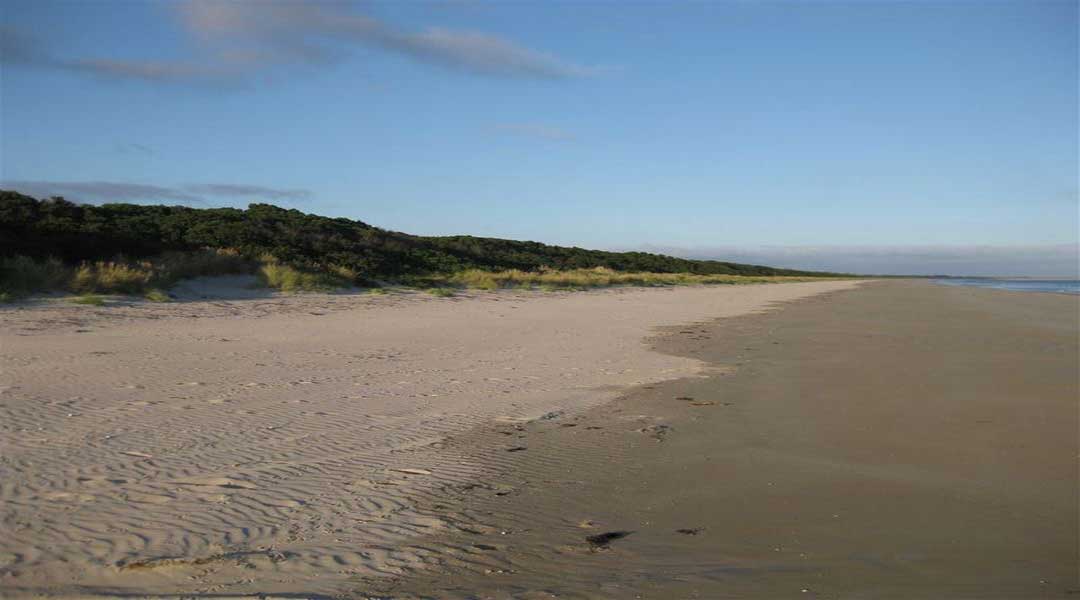
Anthony Beach
Anthony Beach commences at Eagle Point on the eastern side of Duck Bay and curves to the east for 13.3 km to 500 m wide West Inlet, where a deep tidal channel and tidal shoals extend 1 km off the inlet. This beach is backed by a continuous well developed foredune ridge plain which widens from 400 metres at the ends to 700 metres in the centre where there are up to 50 m low, closely spaced ridges. The island is linked to the mainland in the centre, with a 4 km road from the Bass Highway terminating at a beachfront car park in the centre of the beach. Duck Bay backs the western 5 km of the island, while West Inlet backs 3 km of the eastern end, with generally low marsh in between.
Locally and originally known as Seven Mile Beach - it was changed because of duplications. The Anthony family lived for many years in vicinity of beach.

